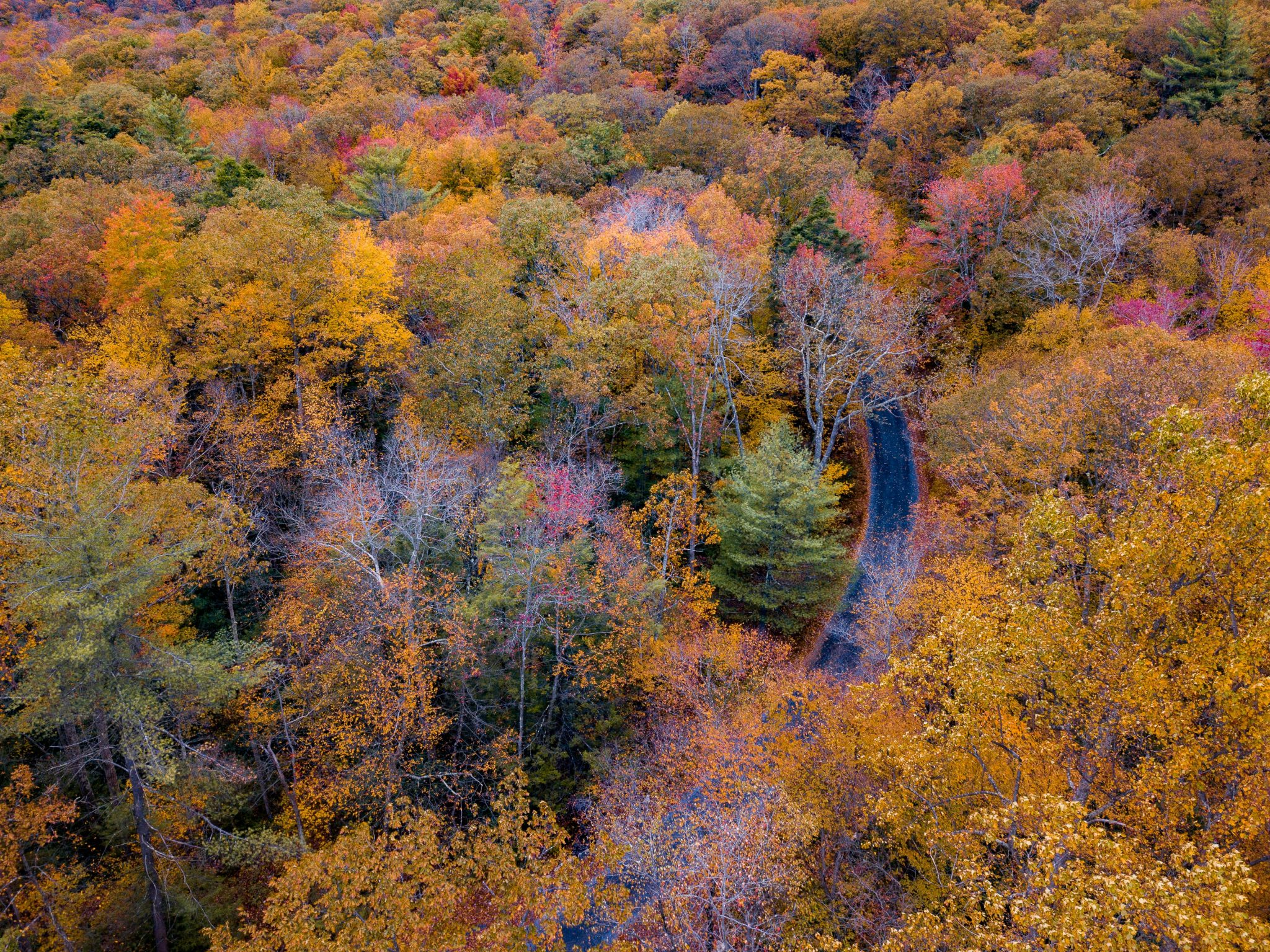The Science Behind Minnesota’s Autumn Colors
Image of trees with fall leaves and a winding road by Aaron Burden
As the days grow shorter and the crisp Minnesota air carries the scent of pine and earth, the forests around our state begin a stunning transformation. Green leaves give way to fiery reds, golden yellows, and deep oranges, turning every trail into a living painting. It might feel like magic—but it’s actually science doing its thing, a perfect mix of sunlight, temperature, and timing.
Why I Love Fall
Fall will forever and always be my favorite time of the year. There’s a peacefulness to it all—like the world is taking a quiet pause before winter rolls in. No matter how many years I’ve watched the seasons change, it never loses its magic. I had the opportunity to take a deep dive into the science behind fall colors when completing my Bachelor’s of Biological Sciences at Bethel University. I took a lab in my first semester, where I had the opportunity to track chlorophyll levels in various deciduous tree leaves and note what other pigments took over. Knowing what is happening inside the leaves makes it that much more interesting. Understanding how the trees prepare for winter—the chemistry, the timing, the pigments—it makes me appreciate every shade of red and gold a little more.
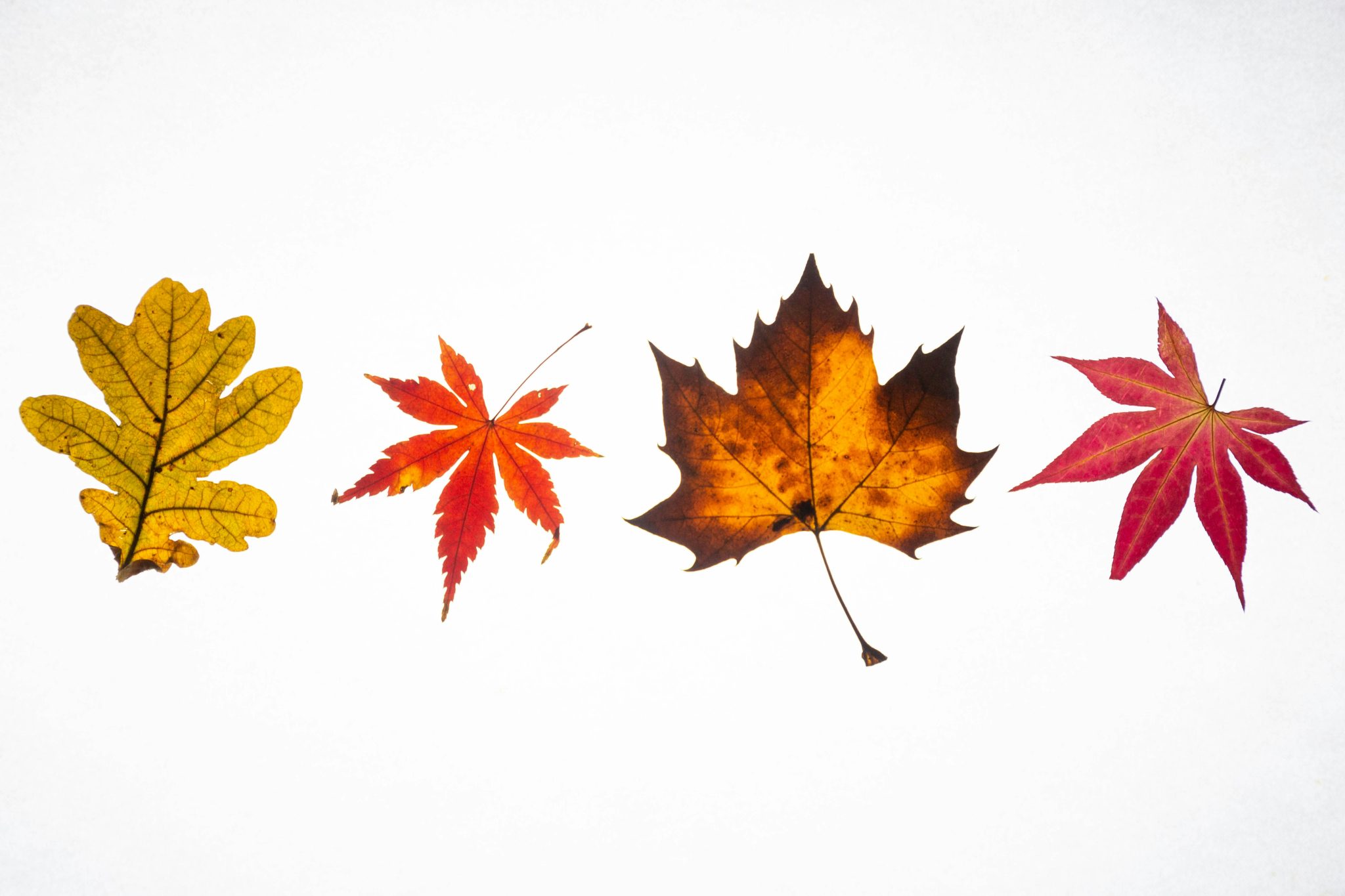
Image of various fall leaves by Lucas George
The Work of Chlorophyll and Pigments
Autumn leaves don’t just change color for fun—there’s a whole chemical story happening inside every tree. As daylight fades and temperatures drop, trees begin to slow their food production and pull nutrients back into their branches and trunks. In doing so, they cut off the leaves from their main energy source, signaling the start of the big color change.
During the warmer months, leaves are full of Chlorophyll, the green pigment that helps trees turn sunlight into energy through photosynthesis. Chlorophyll’s bright green usually hides the other pigments that have been there all along. Once the sunlight fades, chlorophyll breaks down, and that’s when the real show begins.
- Carotenoids are responsible for yellow and orange hues. This pigment is dominant in plants such as corn, daffodils, and carrots. Carotenoids are present in all leaves, and often assist chlorophyll with energy conversion, but aren’t visible until chlorophyll is gone. Carotenoids are responsible for the yellow coloring in Norway maples, yellow poplar, birches, hickories, ashes, aspen, and many other trees.
- Tannins, which are responsible for the brown hues. Tannin pigments are always present in leaves, and much like carotenoids, they only take over when other pigments have been depleted. They are a common waste product of trees and often deposit themselves in dead tissue. The brown coloring from tannins is common in many oak species.
- Anthocyanins are responsible for red and purple hues. Anthocyanin pigments are formed when sugars combine with complex compounds called anthocyanidins. Anthocyanins aren’t typically present in the leaves until they’re produced in the autumn. Anthocyanins are responsible for the coloring in sugar and red maples, sassafras, sumac, dogwood, and many other plants.
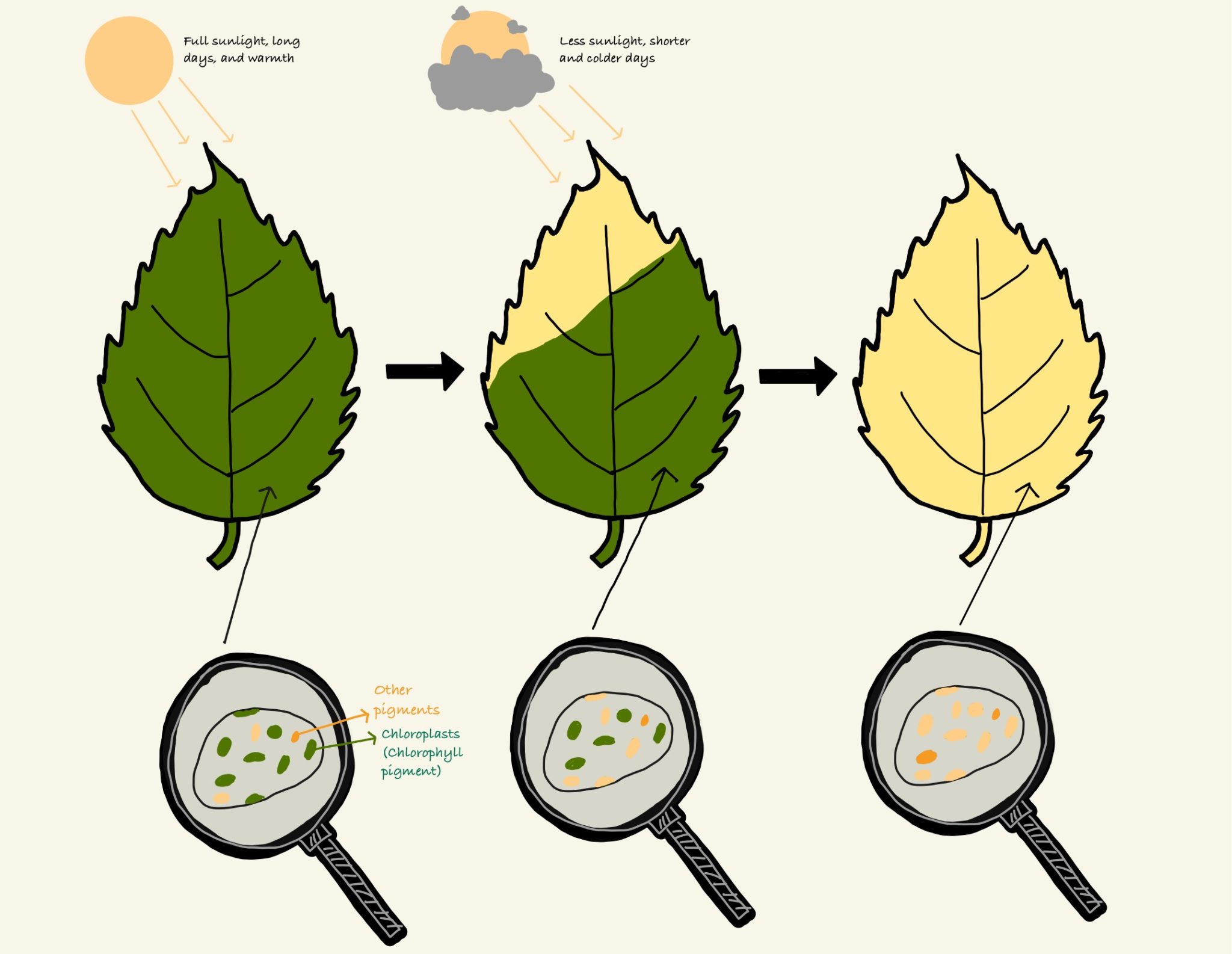
Diagram of the color-changing process of a leaf. Full sunlight gives green leaves, full of chloroplasts, which are full of the pigment chlorophyll. As sunlight decreases, so do chloroplasts. This starts to bring out the colors of other pigments. Eventually, the leaf is devoid of any chloroplasts and only has other pigments. Illustrations created by Brookelyn Sams.
Ecological Importance
While we admire the beauty of autumn leaves, the trees are hard at work preparing for survival. The shift in color is part of a larger process that helps them conserve energy and protect themselves through Minnesota’s harsh winter months. As daylight decreases and temperatures drop, trees begin to seal off the connection between their leaves and branches. A thin layer of cells, called the abscission layer, forms at the base of each leaf stem. This gradually cuts off water and nutrient flow, causing the leaf to die and eventually fall away.
By shedding their leaves, trees prevent water loss and damage from freezing. In winter, when the ground is frozen, drawing up water becomes nearly impossible—so going leafless is a smart survival strategy. Without leaves, trees can withstand snow, ice, and wind far better, conserving their stored energy until spring returns. Fallen leaves, though no longer part of the tree, play an essential role in the ecosystem.
As they decompose, they enrich the soil with organic matter and nutrients, feeding microorganisms and helping the next generation of growth thrive. It’s nature’s recycling system at its finest.
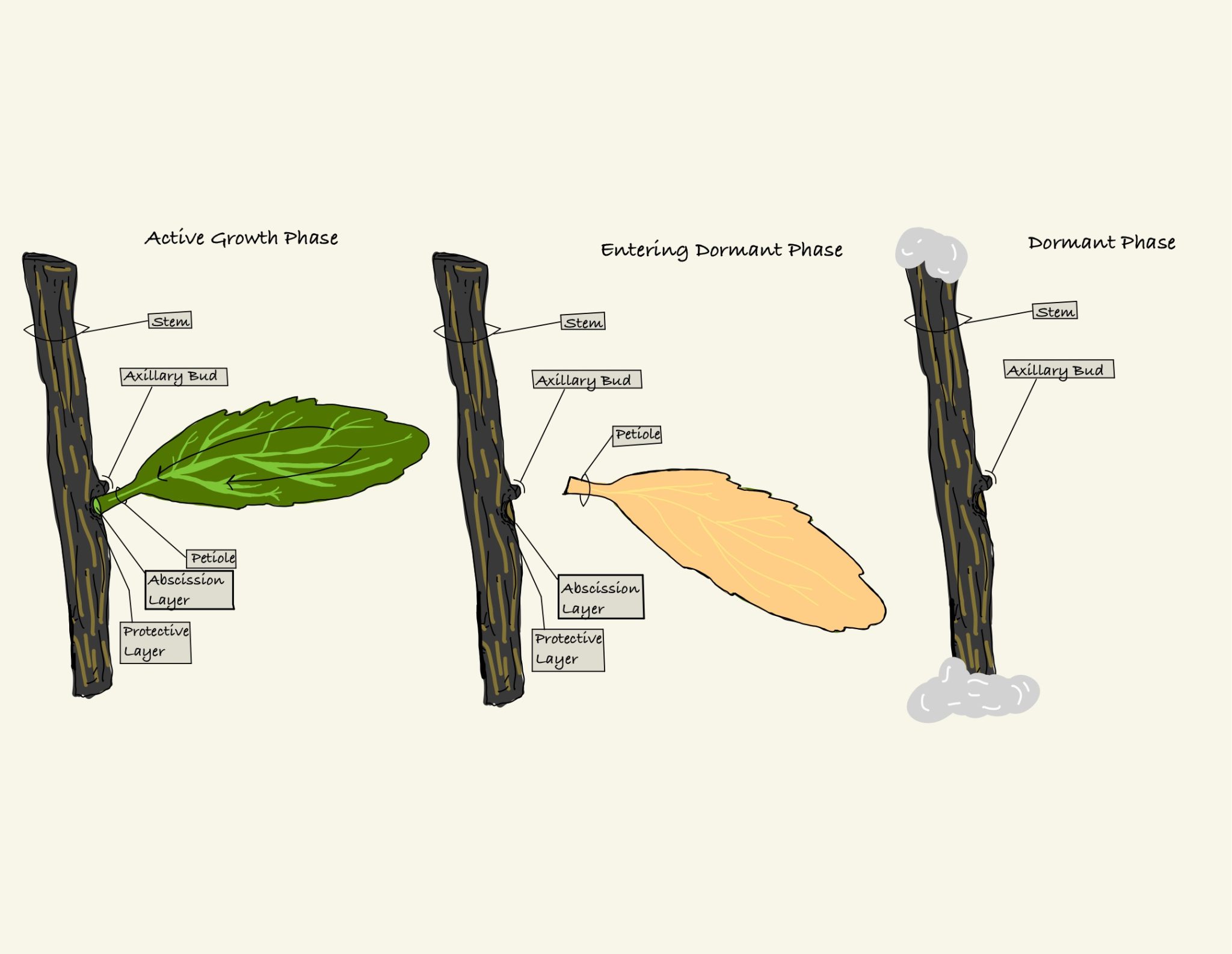
Diagram of a leaf on a tree stem going through various stages. In its growth stage, the green leaf is attached via the abscission zone. When it enters dormancy, it gets cut off from the tree and falls to the ground. Illustrations created by Brookelyn Sams.
Why Does Minnesota Get So Colorful?
Minnesota has some of the most breathtaking fall colors in the country—and that’s no coincidence. Our climate and mix of trees make it the perfect recipe for a spectacular season. Warm, sunny days and cool nights help build up sugars in the leaves, which means more of those rich reds and purples.
Our forests are incredibly diverse too, with hardwoods and conifers mixing to create that layered, multicolored look we love. In the north, cooler temperatures kick off the color changes earlier—usually by late September. The central and southern parts of the state start in early to mid-October. The hills, lakes, and valleys make the whole thing even more dramatic!
So when you find yourself surrounded by the incredible colors, you’re witnessing the result of just the right mix of sunlight, temperature, and biology!
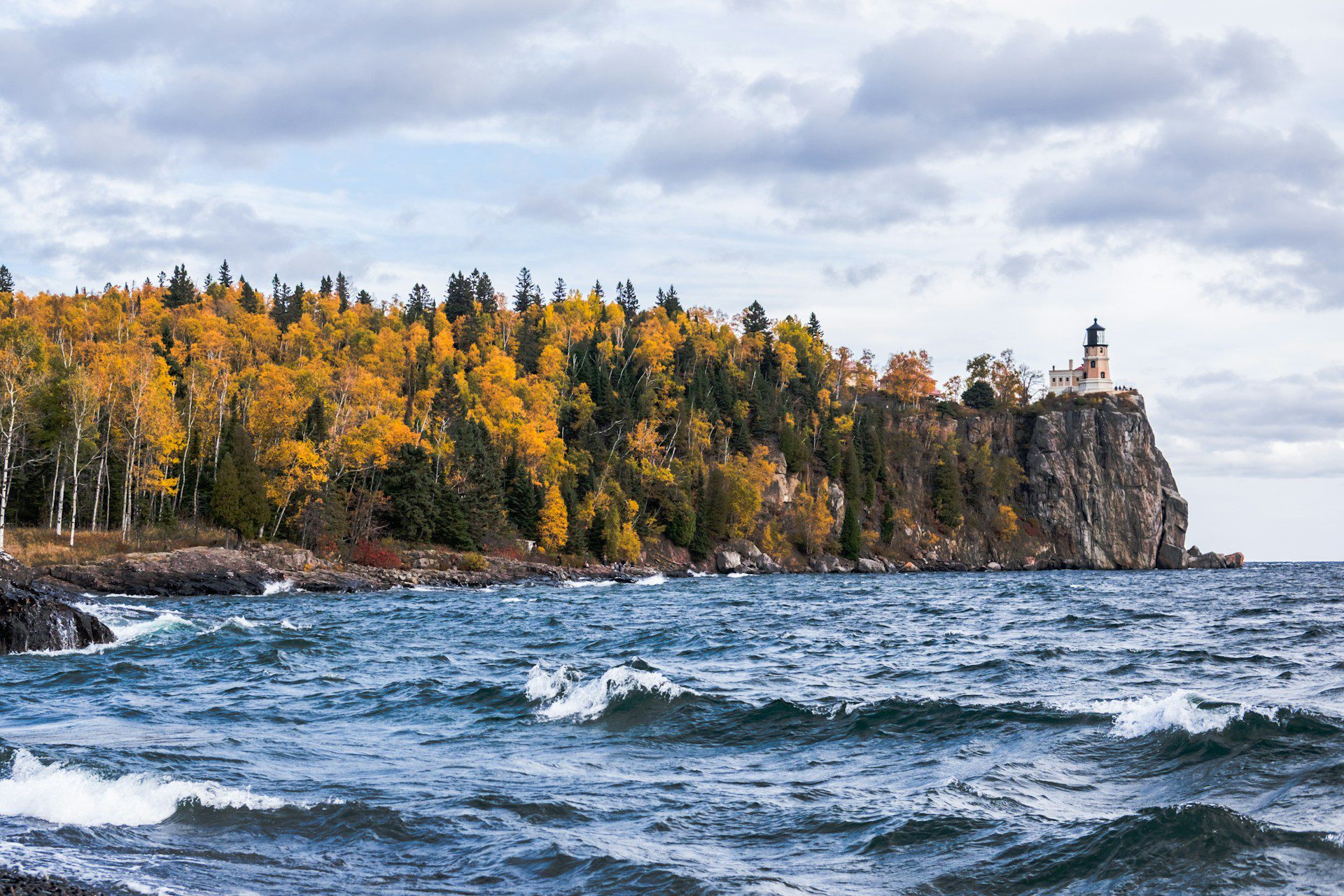
Image of Split Rock Lighthouse on Lake Superior by Luke Tanis
Timing and Peak Color
In Minnesota, timing is everything when it comes to catching the fall color show at its best. The transformation usually begins in the northern part of the state around mid to late September, then slowly works its way south, wrapping up by mid-October. Each region’s peak depends on a delicate blend of temperature, sunlight, and moisture.
A warm, wet summer followed by cool, sunny autumn days and crisp nights tends to produce the most vivid colors. Too much rain or an early frost, though, can shorten the season or dull the brilliance of reds and oranges. That’s why no two years ever look quite the same. If you’re hoping to plan your visit perfectly, the Minnesota Department of Natural Resources Fall Color Finder is a great resource. It tracks peak color progression across the state with weekly updates and photos submitted by visitors.
You can usually expect:
Northern Minnesota: Late September to early October
Central Minnesota: Early to mid-October
Southern Minnesota: Mid to late October
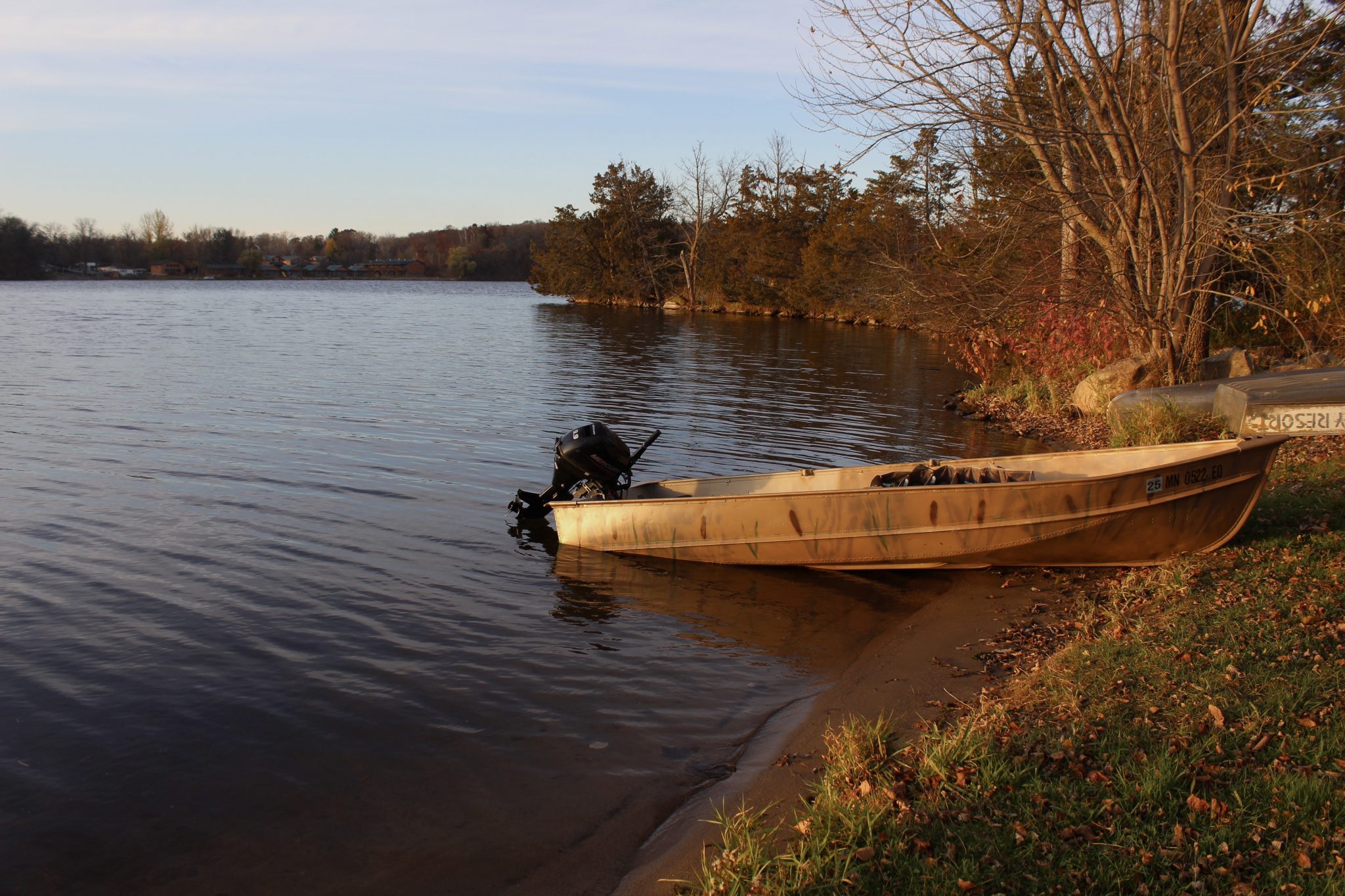
Image of a boat taken on Sam’s Island by Brookelyn Sams. Campfire Bay Resort can be seen in the background.
How to Enjoy the Colors
And when you’re here—get outside and soak it all in. Take a quiet morning walk along the lakeshore, paddle a canoe between golden birches, or simply sip a warm drink. Bring a camera or a journal, or just be still and watch how the sunlight shifts the colors throughout the day. The more you notice, the more you appreciate. As you walk through the woods, take a moment to pause and breathe it in. The trees are teaching us something timeless: that letting go can be a part of growth, and that every season has its own kind of wonder.
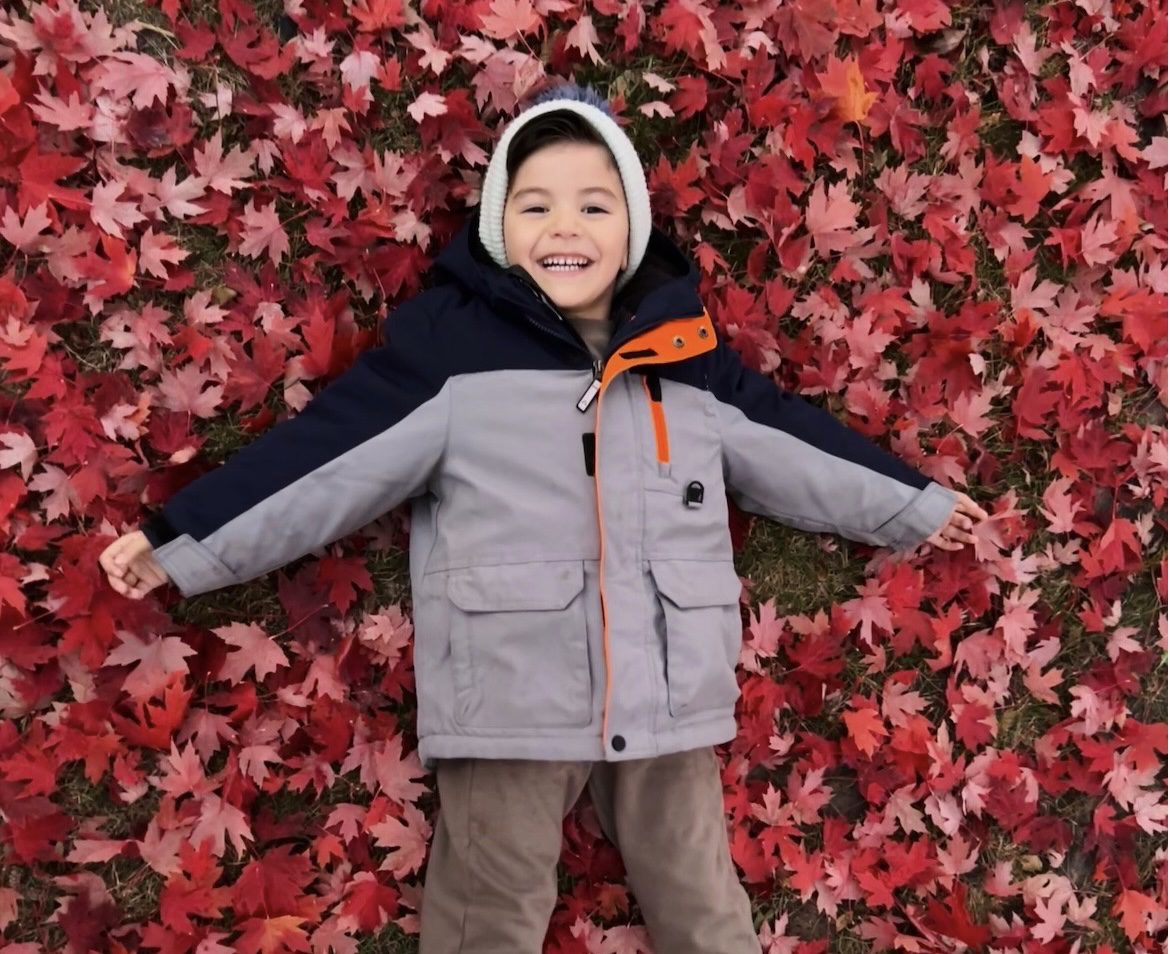
Image of little Osman making a “leaf angel’ in red maple leaves. The photo was provided by his mother, Sandy.
If you’re looking for some good books to read as you’re enjoying everything fall has to offer, you can check out our Autumnal Read for Fall 2025 blog, written by Olivia!
If you’re dreaming of seeing this transformation up close, there’s no better place than right here at Campfire Bay Resort. Nestled among the woods and just steps from the lake, it’s the perfect spot to take in the colors of autumn leaves from every angle. Whether you come for a peaceful weekend getaway or a family adventure, our corner of Minnesota becomes a front-row seat to one of nature’s most spectacular shows.

